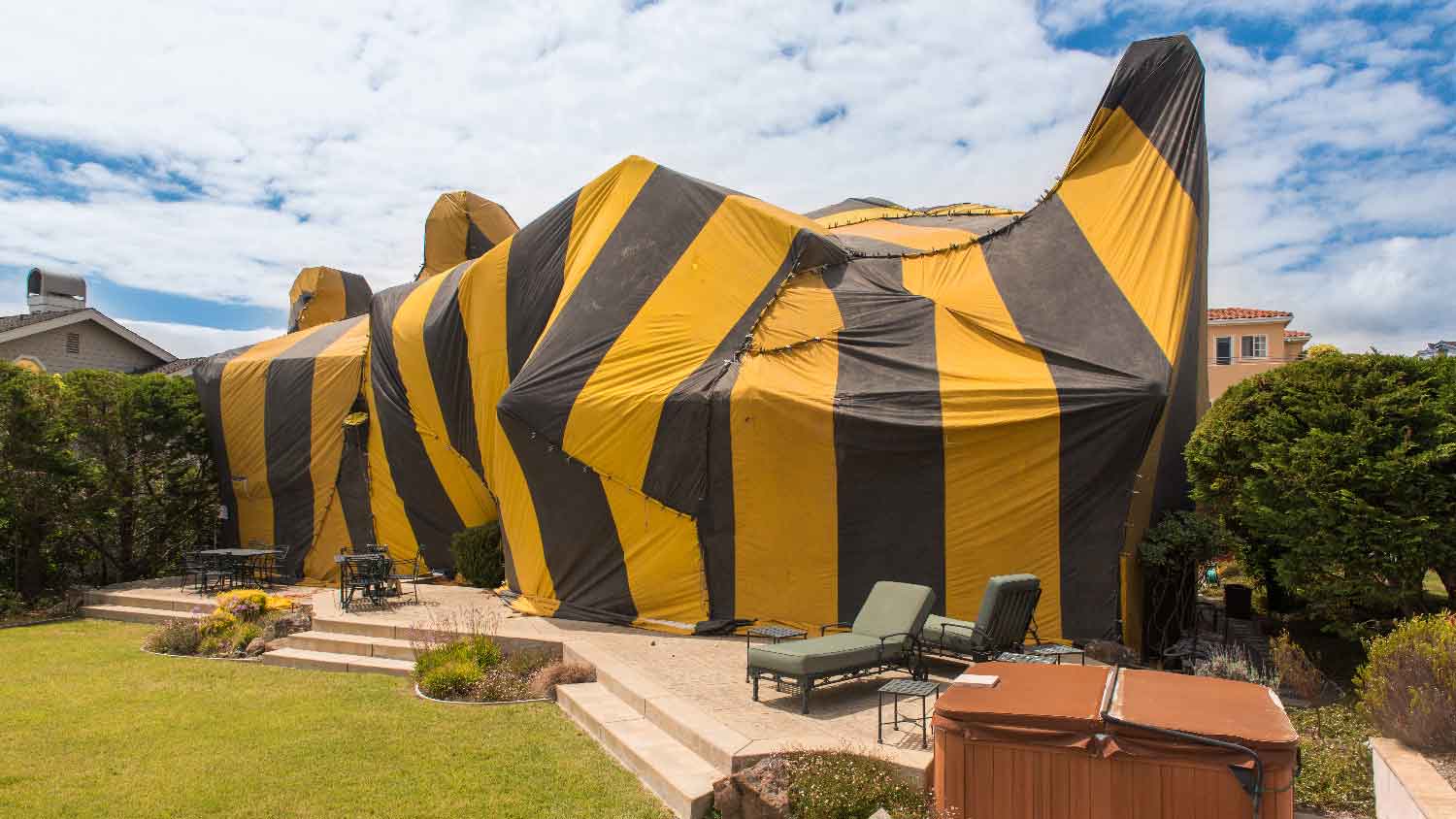
Whether you have bugs, bats, or rodents invading your home, you’ll want to contact an exterminator quickly. Find out how much pest control costs.
Learn how to spot and address termite damage hiding in your baseboards


Common signs of termites in baseboards include peeling paint, hollow-sounding wood, mud tubes, termite droppings, exit holes, and discarded wings.
Different termite types (drywood, dampwood, and subterranean) show distinct warning signs that help identify the infestation source.
Professional termite inspections and treatments are essential for severe infestations, as DIY methods may be ineffective or risky.
Repairing or replacing baseboards affected by termites can range from $800 to $2,250 or more, depending on materials, labor, and the extent of damage.
Signs of termites in your baseboards can be subtle at first, but catching them early can save thousands of dollars in structural repairs. Unfortunately, termites often go undetected for long periods because their activity is hidden behind walls or furniture. Learn what tell-tale signs can reveal an infestation before it gets worse.
Termites compromise the structural integrity of your home, and unfortunately, the damage often goes unnoticed until it's extensive. Infestations can hollow out your baseboards, weaken framing, and even affect load-bearing walls. If left untreated, termite damage can lead to costly repairs and potentially compromise your home’s structural integrity.
These are the main warning signs of termites in your baseboards.

Paint on your baseboards that looks like it's bubbling, cracking, or flaking may not be wear and tear. Termites chew through wood just below the surface, causing paint to lose its hold and blister or peel.
If your baseboards sound hollow when tapped with a screwdriver handle, termites might have eaten away the interior. Damaged wood may also feel soft when pressed. This is a clear sign of an ongoing termite infestation.
Subterranean termites build mud tubes made of soil, wood, and debris. These act as protected tunnels from the ground to your baseboards. Tubes are often found along the foundation or in corners behind furniture.

Drywood termites excrete small, pellet-like droppings that collect in piles. You might find these on windowsills, under furniture, or near baseboards.
Swarming termites chew small exit holes into drywall or baseboards. You might also notice a ripple effect or waviness in the drywall as termites tunnel behind it. Also, keep an eye out for signs of termites in drywall, including similar signs like bubbling paint, hollow-sounding wood, and discarded wings.
After there’s a termite swarm, the insects shed their wings. Piles of these translucent wings often appear near window sills, vents, or baseboards.
Signs of termites in baseboards and throughout your home can vary based on the type of termite you’re dealing with. Here are the key differentiating signs.
Drywood termites nest directly in wood and don't need contact with soil. Warning signs include:
Dry, pellet-like droppings
Hollow-sounding wood
Kick-out holes
Unlike drywood termites, dampwood termites thrive in wet or decaying wood. Although they are larger than other common termite types, their colonies tend to be smaller. Some indicators of dampwood termites include:
Hollow wood
Soft wood
Swarming activity
True to their name, subterranean termites live underground and usually surface only to feed. Common signs include:
Mud tunnels
Swarms of winged termites
Discarded wings near windows or doors

You might not notice a termite infestation right away, but they can cause major damage to your home if left untreated. If you see multiple warning signs of termites on your baseboards or throughout your home, it's time to bring in a termite control expert ASAP. A pro can confirm the infestation with a thorough inspection, assess the severity, and treat the problem at its source before it gets worse.
DIY termite treatments, including bait stations, diatomaceous earth, and liquid termiticides, can be effective for prevention and minor infestations. However, handling chemicals without proper training can be risky, and these methods are often less effective than professional treatments.
Hiring a licensed local termite specialist ensures the infestation is properly addressed and helps prevent future outbreaks. Severe infestations, especially those that require fumigation or tenting, should always be handled by a professional with the right tools and expertise.
Follow these guidelines for preventing a termite infestation in your home:
Keep moisture away: Fix leaks and ensure gutters direct water away from the home.
Seal cracks: Close gaps around baseboards and foundations to block entry points.
Store wood away: Keep firewood and mulch at least 20 feet from the house.
Schedule inspections: Have a pro inspect your home annually for termites, especially if you live in a high-risk area.
The average cost of installing new baseboards is between $800 and $2,250, while expenses like painting and minor repairs average between $1 to $6 per linear foot. Replacing or repairing baseboards can vary widely in cost, depending on factors like material, style, labor, and whether you need to remove old baseboards first. Premium materials like hardwoods (such as oak, cherry, or maple) cost more per foot, while budget-friendly options such as PVC or medium-density fiberboard come in at a lower price point.
From average costs to expert advice, get all the answers you need to get your job done.

Whether you have bugs, bats, or rodents invading your home, you’ll want to contact an exterminator quickly. Find out how much pest control costs.

Explore the average earwig extermination cost and learn what factors affect pricing, from home size to infestation severity.

Sometimes birds nest in unwelcome places. Find out how much bird nest removal will cost based on factors like location, bird species, and preventative measures.

Tenting is a costly but effective way to exterminate termites. Learn the average termite tenting cost and everything that will factor into your budget.

Chinch bugs are hard to spot. These are the signs your lawn may be hosting these tiny, destructive pests.

Discover what attracts earwigs to your home and learn how to keep these creepy crawlers out—for good.